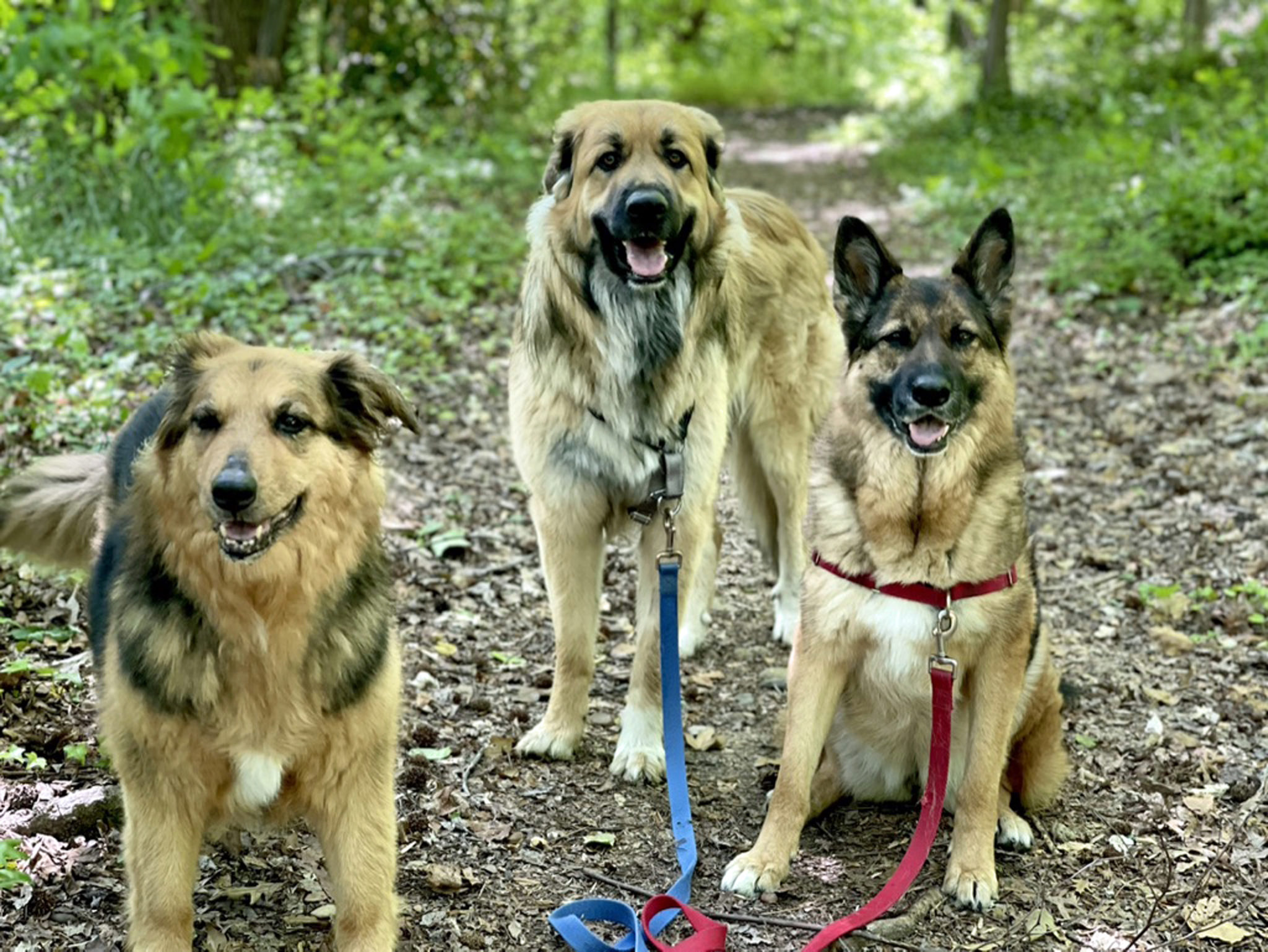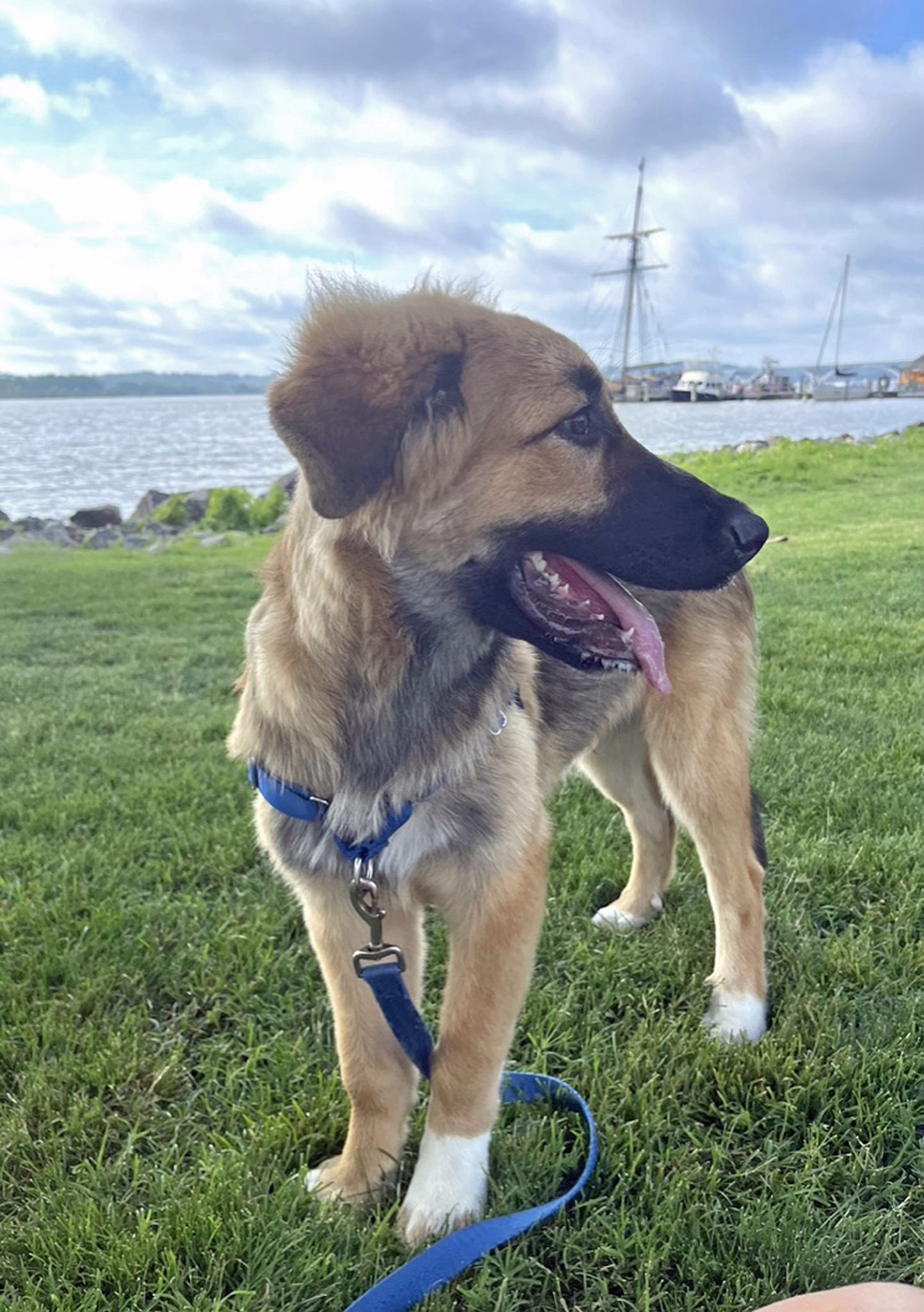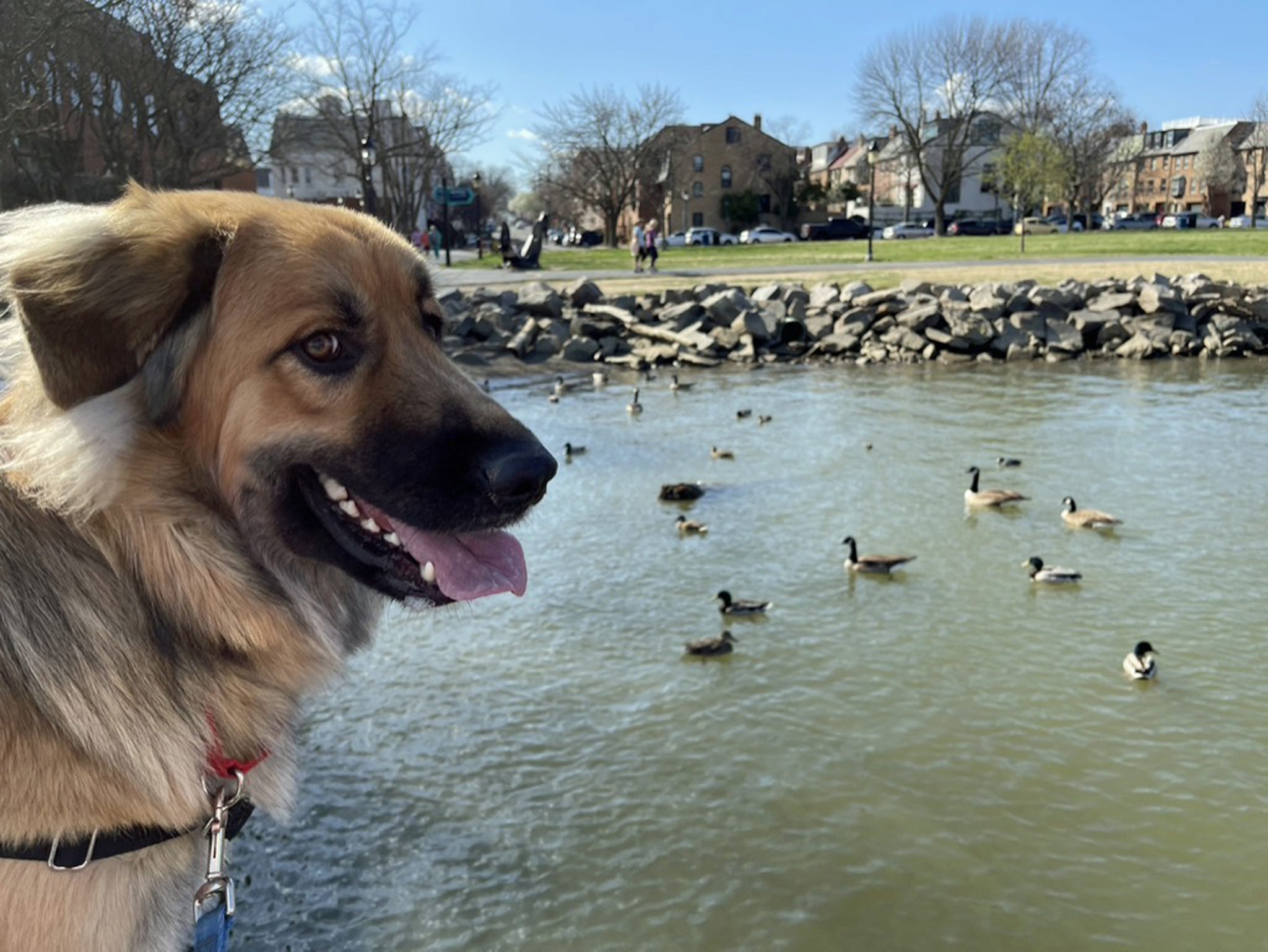
Alexandria, VA – My pup Georgie and I were happily walking through Founder’s Park when something mysterious stopped him in his tracks: a flying kite. His body language – lowered head, ready-to-flee crouch – telegraphed: “What the heck is that?” It was time for me to pull out my fancy new dog trainer trick to get him through this moment, so I said, “Georgie, it’s okay! It’s just a bird.”
Two immediate results: 1) a relaxed, confident, bouncy trot from Georgie toward the kite, and 2) a look that said that lady’s crazy on the face of the little boy flying the kite with his dad. I laughed and told them I know the difference between a kite and a bird, but this phrase helped my dog conclude, “Ah, so that’s a thing that flies around that we don’t have to worry about.”
“Huh,” said the dad. “I never thought about trying to teach my dog something like that.” Me too, Kite Dad, me too. But this winter, I took a canine applied ethology course. One of my top 10 takeaways has been diving into verbal narration. It’s crazy how much it helps dogs navigate this confusing human world.
Of course, I’ve always talked to my dogs, as I’m sure you do. But thanks to ethologist-turned-dog-trainer Kim Brophey, I’m now consciously naming things to give dogs a clue about what’s next. Naming the things a dog may view negatively eases anxiety (and its cousins skittishness and reactivity) dramatically.

Yes, I’m telling you to talk to your dog more. It sounds too simple, but I promise you, it’s a game-changer.
The Mr. Rogers Hack
“Dogs have the receptive language ability of a toddler.” As Brophey dove into this topic during her week-long professional course, a light bulb went on for me. I taught preschool before pivoting to dogs. I can tell you that while most toddlers can’t articulate their thoughts well, they understand an astounding percentage of what people say.
Note that we try to tell those toddlers what’s happening around them, which builds their confidence as they begin to see patterns in an otherwise chaotic world. Think about the old Mr. Rogers show and that dear man’s predictably reassuring commentary: “Let’s go over to the tank and feed the fish now.”
Guess what? Purposeful narration works for dogs too. Brophey calls it the “Mr. Rogers Hack.” She drives home that so much of our human environment is utterly foreign to dogs, and they constantly have to work hard to figure out what the heck is going on. “Should I be worried? Should I be excited? Will I be interacting with that? Will it be loud? Can I eat it?” Cue anxiety, skittishness, arousal, reactivity.
We can lessen their load by explaining life as it unfolds, just as Mr. Rogers does.
How It Works
This does not mean that we should all begin prattling on to our dogs about, say, global politics! The key is that the oft-repeated words and phrases must be relevant to the dog. When focused on things the dog has feelings about, the Mr. Rogers Hack gives the dog a clue about what’s coming next, helping him prepare.
For example, the other day I was walking my three big dogs and we turned a corner to find a construction crew working on the street. A handful of men were wearing reflective gear and hard hats, holding big tools, next to a noisy truck. If I did nothing in that scenario, I’d have a challenge on my hands: one barker, one slinker, and a 100-lb adolescent open to suggestion.
Historically, my approach would have been to 1) switch direction or 2) use cues like “touch,” “look,” and “find it” to pull the dogs’ attention away from the crew and onto something familiar and reassuring as we pass by as quickly as we can. With three of them, though, that’s not always a graceful moment.
So I used the Mr. Rogers Hack. I exclaimed in a cheery voice, “Oh, great, they’re fixing it!” My dogs relaxed. No stream of cues necessary. No distraction necessary. They were able to casually watch the crew as we loose-leashed our way past. Why? Because now I always use that phrase – “Oh, great, they’re fixing it!” – whenever unexpected humans in weird clothing are working in unusual places doing strange loud things.
“They’re fixing it” lets my dogs’ brains stop working so hard to figure out every construction/lawn/paint/tree crew we come across. Those words help my dogs categorize this experience and predict what’s next: we’ll continue our walk, and that temporary crew won’t impact us.

Sample Vocabulary
Using a word to indicate a category of things that will pass on by is helpful, relaxing information for a human to supply. Here are examples of words that, when used regularly, can reduce arousal/anxiety by communicating to your dog that 1) yes, you see it too and 2) it won’t affect the two of you at all:
“Plane” = anything loud in the sky
“Bike” = human moving fast on a non-motorized bike, scooter, skateboard
“Neighbor” = random person we see out walking
“Kids playing” = kids moving around, being loud
“Runner” = human moving fast
“Doggy” = dog we see but won’t greet up close
You can use words like these to give your dog a heads-up to anticipate more interaction:
“Buddy” = dog we’ll get up close to, sniff, walk or play with
“Friend” = human we’ll say hi to
“Guest” = people coming into the house (will telegraph that people will come in, sit around and talk)
“Helper” = plumber, electrician, painter, or anybody coming into the house to work (may telegraph that person will be hanging out for a while, perhaps unsupervised by family, using tools, making noise)
It can be helpful (and just plain fun) to teach your dog things that come up every day, like:
“TV time!” = snuggle in because we’ll be here for a while
“See ya later” = go ahead and nap because I’m leaving for a while
“I’ll be right back” = don’t follow me upstairs because I’m coming immediately back down
“This way” = we’re going to change direction
“First,” “Next” = for multiple-dog families organizing getting harnesses on, training, getting in the car, being brushed, etc.
This deceptively simple shift in how we talk to our dogs is one of the best gifts we can give them. Intentional, consistent, predictive narration creates calmer dogs. The bonus? Happier humans – even if it does mean you get a funny look from a stranger when you call a kite a bird!
Kathy Callahan is certified as a professional dog trainer and a family dog mediator. (CPDT-KA, FDM) Her family has fostered more than 200 puppies, and she’s the author of 101 Rescue Puppies. She specializes in puppyhood coaching, runs a puppy playgroup, and offers behavior/training consultations—more at www.puppypicks.com.
ICYMI: Do’s and Don’ts for Teaching Reliable Recall




